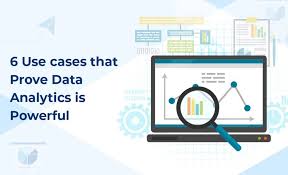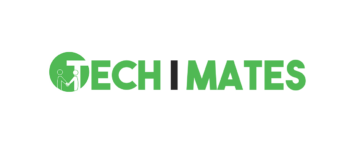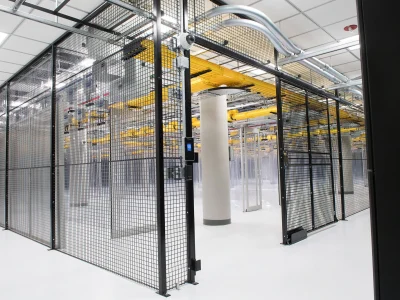Walk into a farm shed, a hospital ward, or a theatre foyer and you’ll find something in common: decisions made under pressure with imperfect information. That is exactly where business analytics shines. The surprise isn’t that retailers and software firms use data; it’s that “non-tech” sectors—often running on clipboards, intuition and tight margins—can gain the most from simple, well-aimed analysis. Below are practical, real-world use cases that show how evidence can quietly transform everyday work.
Farming And Fisheries: Forecasts That Feed People
Weather volatility, input costs and perishability make agriculture a high-risk game. Basic analytics can stabilise it. Growers combine local weather histories with soil data and past yields to decide sowing windows and irrigation schedules. Simple time-series forecasts help cooperatives plan cold-storage capacity and negotiate transport in advance, cutting waste. Fisheries use demand curves and harbour landing data to set daily reserve prices, reducing unsold catch. None of this needs exotic models; it needs clean records, a repeatable workflow, and decisions that actually change when the numbers do.
Healthcare Operations: Flow Over Fancy
Clinical excellence often hides operational bottlenecks. Queue data, admission patterns and procedure durations can be modelled to reduce waiting times and bed shortages. A theatre manager, for instance, can use historical case lengths to build schedule buffers that lower cancellations without slashing throughput. Ward-level dashboards that track “time to first assessment” and “discharge before noon” create rapid feedback loops. Pharmacy teams use ABC/XYZ analyses to set stock policies so high-criticality drugs never stock out while slow movers don’t lock capital.
Hospitality And Quick-Service: Menu Math Without Guesswork
Restaurants live and die on menu design and prep planning. Basket analysis reveals which dishes travel together; that informs combo pricing, station layout, even oven timing. Prep lists can be forecast by daypart and weather—more hot beverages on rainy evenings, more salads at lunch—lifting sell-through and lowering spoilage. In hotels, housekeeping uses occupancy forecasts and historical room-turn times to optimise shift start times, reducing overtime and improving guest readiness. Review-text mining, even at a simple keyword level, prioritises fixes that impact ratings fastest.
Construction And Real Estate: Risk Seen Early
Projects slip not because the Gantt chart is wrong, but because weak signals are missed. Site managers can track leading indicators—RFI turnaround time, subcontractor no-show rate, inspection rework percentage—to predict schedule risk before it becomes visible on the critical path. In real estate leasing, footfall counters and enquiry conversion rates by unit type help set incentives and decide which listings to rotate to premium portals. Portfolio owners use heatmaps of maintenance tickets to renegotiate service contracts with objective evidence.
Sports And Fitness: Margins Of Performance
From local clubs to national academies, performance data is plentiful but underused. Coaches can link training load, sleep metrics and session RPE (rate of perceived exertion) to injury risk and taper plans. Gyms mine check-in histories to design nudges that reduce churn: targeted “streak” messages for members who typically quit in week seven, or class schedule tweaks when waitlisted sessions consistently overflow. Retail corners inside gyms use micro-experiments on signage and placement to boost attachment rates without discounting.
Education And Skills Training: Outcomes, Not Enrolments
Training providers often track enrolments and completion but not skill lift or job impact. Cohort analyses that compare baseline assessments with exit scores by module highlight where curriculum time should be reallocated. Alumni employment data linked to course paths can reveal which combinations of projects and mentorship correlate with placement speed. Organisations building internal capability frequently adopt structured programmes—such as business analyst training in Bangalore—to raise a common baseline so teams can interpret findings and act quickly.

Arts, Culture And NGOs: Impact Per Rupee
Museums and theatres face the classic challenge of doing more with less. Ticketing records and postcode data identify underserved neighbourhoods for outreach. Pricing experiments—student rush, dynamic discounts for rainy days—can lift occupancy without eroding average revenue. NGOs track programme uptake and outcome metrics (e.g., school attendance, clinic follow-ups) to prioritise interventions that deliver the largest benefit per rupee, then use geospatial charts to target field staff where marginal returns are highest.
How To Start When You’re “Not A Data Company”
1. Write Down The Decisions: List five recurring choices you struggle with—staffing, pricing, stocking, scheduling.
2. Define One Question Each: “What staffing level keeps wait time under eight minutes on Saturdays?”
3. Collect Only What You’ll Use: A small set of clean columns beats a data swamp: date/time, location, product/service, quantity, price, outcome.
4. Build A Weekly Rhythm: A 30-minute review where you compare last week’s decisions with outcomes and choose one change to test.
5. Keep A Benefits Ledger: Note the decision, the metric moved, and the financial or service impact. Evidence compounds when you record it.
Mindset Shifts That Make Analytics Stick
- From Gut To Guardrails: Intuition still matters, but metrics provide the boundary lines.
- From Dashboards To Decisions: Every visual should support a specific choice and a next action.
- From Projects To Products: Turn recurring analyses into small, reliable data products with owners and update cadences.
- From Heroes To Habits: Replace “data wizard” dependency with shared skills across roles; frontline fluency accelerates change.
The Quiet Competitive Edge
What ties these diverse examples together is not technology but intentionality. Small, repeatable analyses—run on the right cadence—build a culture where evidence earns the right to guide judgement. As capability grows, teams graduate from counting what happened to predicting what’s next, and then to shaping demand and operations proactively. Many organisations anchor this journey with targeted upskilling; programmes like business analyst training in Bangalore can help non-tech teams read the numbers, question assumptions and turn insight into daily practice.
Non-tech doesn’t mean anti-data. It means closer to the physical world, where constraints are real and wins are felt on the shop floor, the ward, the pitch and the stage. That is precisely where analytics belongs—quietly reducing waste, revealing opportunity and making better decisions feel obvious.








Comments